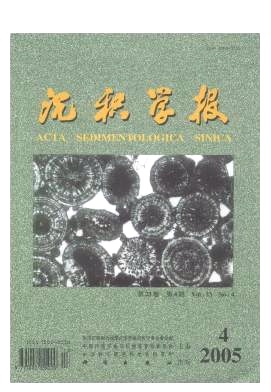Character istics of Clay Mineral Assemblages and Their Spatial Distribution of Chinese Loess in Different Climatic Zones
- Received Date: 2005-06-13
- Rev Recd Date: 2005-07-11
- Publish Date: 2005-12-10
-
Key words:
- loess /
- clay mineral /
- paleoclimate
Abstract: Chinese loess, the Quaternary aeolian deposits in another term, covers a nationwide area from the east China coast to the northwest inland desert. Studies show that the origin of clayminerals bears relation to the formation and evolution of loess. To understand and exp lain the differences of loess under different climatic conditions, this paper constructs a NWW-SEE cross-section which consists of five rep resentative loess profiles (sites) in central Gansu (Lanzhou) , northern Shaanxi (Luochuan) , central Shaanxi (Baoji) , northern Henan (Jiyuan) and the lower reaches of the Yangtze river ( Zhenjiang) , respectively. Samples taken from Lanzhou loess and Zhenjiang loess, and also from the present dust-storm deposits were analyzed by using X-ray diffraction system. Preliminary conclusions can been drawn as follows: In both loess and the dust-storm deposits, a number of clay minerals were examined through X-ray diffraction. They are illite, chlorite, vermiculite, kaolinite, smectite group and mixed layerminerals. In Lanzhou loess illite and chlorite are dominant, but in Zhenjiang loess the clay mineral assemblage is illite-vermiculite type. Comparing with other loess profiles ranging between Lanzhou and Zhenjiang, it is found that the claymineral assemblage changes gradually from northwest to southeast. Along with the latitude getting lower, the content of chlorite decreases, while the content of vermiculite increases. This imp lies that clay mineral assemblage must have close reference to the climate.The dry and cold climate favors for the formation of chlorite, the warm and humid climate benefits for vermiculite.Furthermore, the content of vermiculite and its interstratified minerals can also be a proxy ofweathering intensity. To conclude, the claymineral assemblage of loess can be used to trace the source ofmothermaterial and understand the post-depositional climate conditions
| Citation: | SHI Yu-xin, DAI Xue-rong, SONG Zhi-guang, ZHANG Wei-guo, WANG Li-qun. Character istics of Clay Mineral Assemblages and Their Spatial Distribution of Chinese Loess in Different Climatic Zones[J]. Acta Sedimentologica Sinica, 2005, 23(4): 690-695. |






 DownLoad:
DownLoad: